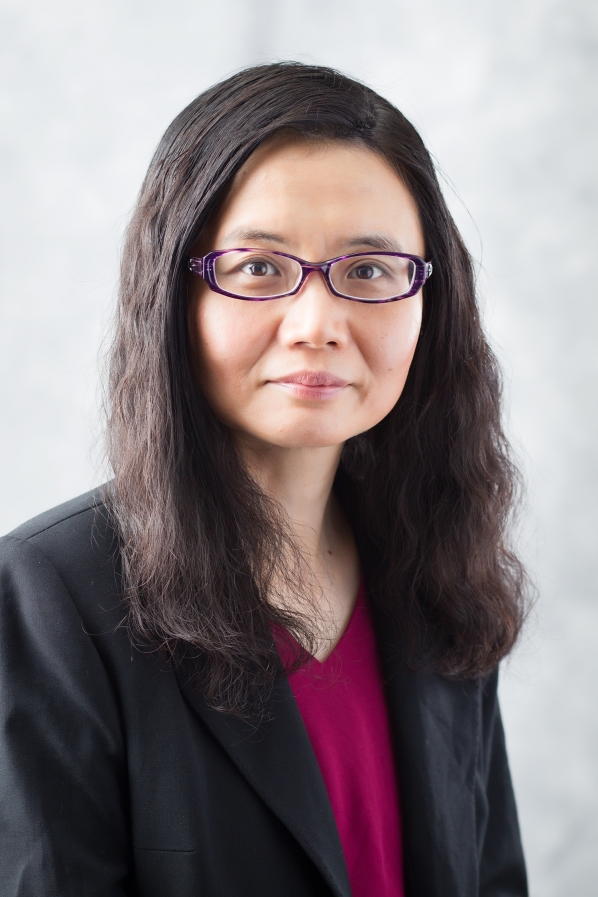With a bachelor’s degree in English from the Chinese University of Hong Kong, master’s degrees in theatre and drama studies and film studies and screenwriting from the University of London and Beijing Film Academy, respectively, and a Ph.D. in performance studies from Northwestern University, professor of theatre Kin-Yan Szeto is a fountain of knowledge.
Originally from Hong Kong, Szeto joined Appalachian State University’s Department of Theatre and Dance as a faculty fellow for diversity in 2005. Students who take her classes have the opportunity to learn a variety of topics, including film, global studies and gender and ethnicity through transnational perspectives. You can read her writings about dance, performance studies and even martial arts cinema in her more than twenty publications, with excerpts appearing in such scholarly sources as “Oxford Bibliographies”and “Visual Anthropology.” Dr. Szeto serves on the Board of Directors of the Dance Studies Association.She has directed over fifteen productions, most recently the department’s production of “Eurydice” by Sarah Ruhl, which opens on February 20.
With the opening night of “Eurydice” quickly approaching, Szeto kindly agreed to answer some questions so that audiences could get to know her, her research and her experience working on the production.
In your experience, what is something about the students at Appalachian that makes you enjoy teaching them?
Szeto: I think every student is unique, so it’s difficult to generalize. But I enjoy working with the students at Appalachian because they are eager to learn. Each generation of students brings something new to our world.
You’re heavily involved with theatre here, but you also have an extensive background and interest in film studies. Do you have a preference when it comes to theatre or film?
Szeto: No, because I think that as long as someone is able to make good use of the medium, he or she is making good art. For most of the time, theatre and film are just different mediums of storytelling.
You wrote a book titled “The Martial Arts Cinema of the Chinese Diaspora” in which you discussed the commercial success of famous Chinese martial arts film artists like Jackie Chan. What inspired you to examine that topic?
Szeto: I continue to be interested in doing fieldwork and in ethnographic research, which has been really significant to developing the ideas I write about. I was able to interview Jackie Chan, and it was important for my research. So I decided to write a book about artists with whom I was able to do fieldwork so that I could write more realistically about these individuals and their work.
Has studying that topic, which is based in film, informed the way you approach theatre and dance? For example, do you find that even while directing “Eurydice” your knowledge of martial arts in cinema somehow seeps into the way you direct?
Szeto: Actually, it’s the other way around. The topic of martial arts cinema itself allows me to explore these three aspects: film, theatre and dance. Martial arts come from and are incorporated into theatre, so it’s related to theatre. It also has a component of dance. So martial arts cinema has all of these different aspects.
What are your plans for future research?
Szeto: I recently received a research fellowship from the New York Public Library. I’m doing some research there about a dance company that is focused on Chinese modern dance. So I’m working on that and trying to finish a book about that particular project.
How do you use your research when directing shows here at Appalachian?
Szeto: I am a scholar, artist and teacher. As a scholar, I use a critic’s lens to analyze the text in its historical, social, cultural and also theoretical context. This lends itself to a rigorous investigation of the play first. Then, as an artist, I bring together the Eastern and the Western theatre traditions when I direct shows. I try to explore diverse ways to approach a production and integrate various conventions and techniques together. As a teacher, I try to help my students understand how theatre, or any kind of art, can transcend cultural and national boundaries. Through art, they can learn more about the world.
What kinds of shows do you like to direct?
Szeto: There are a few shows I want to direct, hopefully sometime in the future. One of them is Chekhov’s “The Cherry Orchard,” another is Shakespeare’s “Macbeth,” and then anything by Samuel Beckett. And also some modern Chinese dramas, which have English translations.
What has been the greatest challenge you’ve faced while directing “Eurydice”?
Szeto: I think the greatest challenge of this play also gives it the strongest, greatest potential because where there’s a challenge, there’s an opportunity. “Eurydice” is part of a tradition that we consider post-modern drama. The playwright brings together several different kinds of genres — comedy, fantasy and tragedy —and they all blend together in an unpredictable way. The language is really poetic and imaginative, and the playwright was able to use dialogue to make poetry in a way that ties to the action. I’m not saying that it’s difficult to understand, but it’s just a different way to think of imagery, which appears like a dream and touches like the breath of life. She (Ruhl) used that particular approach to tell the story. But that’s the playfulness of the script, which also makes it very interesting. It’s unconventional, which is a challenge, but it also has potential and opportunity, so it’s really exciting to direct this piece.
About the Production
“Eurydice” can be seen in the Valborg Theatre on Feb. 20 – 23 at 7 p.m. and on Feb. 24 at 2 p.m. The Valborg Theatre is located on campus at the north side of Chapell Wilson Hall on Howard Street in Boone. The entrance faces the back of the Turchin Center for the Visual Arts on King Street. Parking is available after 5 p.m. on campus in faculty/staff lots and after 5:30 p.m. in the College Street parking deck near Belk Library and Information Commons. Tickets are $10 for students and $17 for adults. For information about purchasing tickets, call the Schaefer Center box office toll free at (800) 841-2787, locally at (828) 262-4046, visit the box office in person between the hours of 9 a.m. and 5 p.m. on any weekday, or go online to theschaefercenter.org/tickets.
By Glenn Ramey
About the Department of Theatre and Dance
The Department of Theatre and Dance is one of seven departments housed in Appalachian’s College of Fine and Applied Arts. Its mission is to facilitate transformative experiences for students and the public, which cultivate compassionate, creative and collaborative communities through theatre and dance. The department also offers coursework for integrated learning through the arts to the general university student population. Its dynamic co-curricular production program provides exemplary theatre and dance experiences to departmental students, the university community and the region.
About Appalachian State University
Appalachian State University, in North Carolina’s Blue Ridge Mountains, prepares students to lead purposeful lives as global citizens who understand and engage their responsibilities in creating a sustainable future for all. The transformational Appalachian experience promotes a spirit of inclusion that brings people together in inspiring ways to acquire and create knowledge, to grow holistically, to act with passion and determination, and embrace diversity and difference. As one of 17 campuses in the University of North Carolina system, Appalachian enrolls about 19,000 students, has a low student-to-faculty ratio and offers more than 150 undergraduate and graduate majors.
###
Media Contact:
Kevin Warner
828-262-7323
warnerks@appstate.edu

